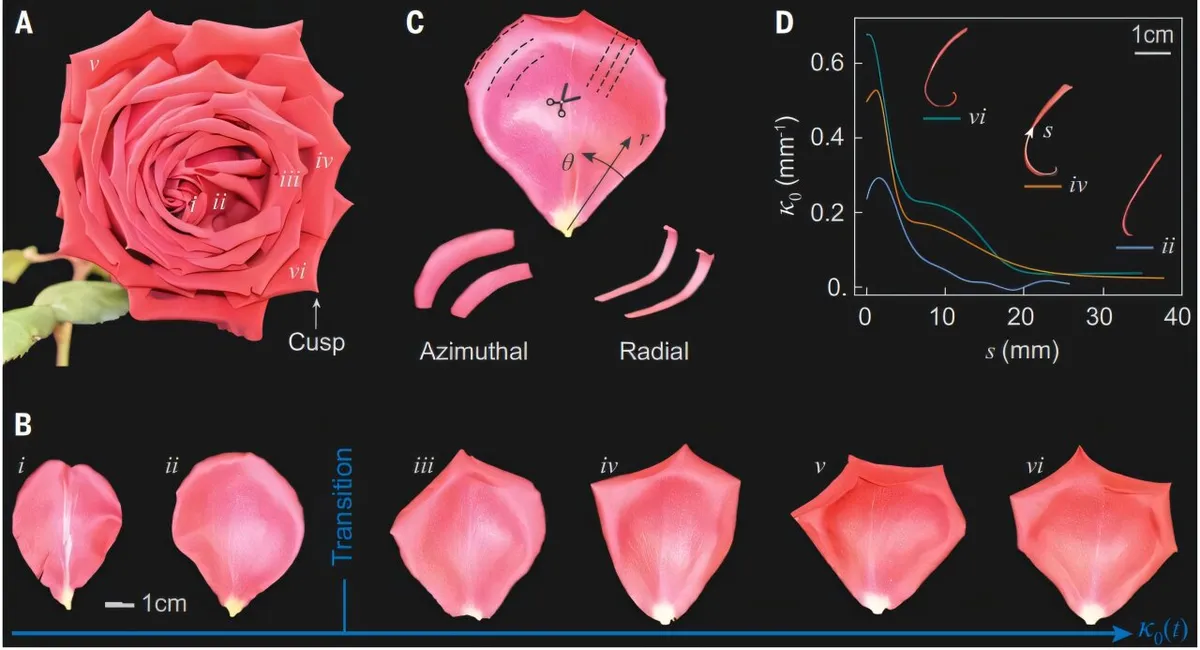
Four physicists from the Hebrew University of Jerusalem, Israel, have made a groundbreaking discovery regarding the mechanical process that underlies the growth of roses as they blossom into their distinctive shapes. Their comprehensive study, published in the prestigious journal Science, features the collaborative efforts of Yafei Zhang, Omri Cohen, Michael Moshe, and Eran Sharon. Additionally, a Perspective piece by Qinghao Cui and Lishuai Jin from the University of Hong Kong accompanies their findings in the same issue.
For thousands of years, roses have been celebrated for their exquisite beauty and enchanting aromas. However, the intricate mechanics behind the growth of these flowers have remained largely unexamined until now. To unveil the secrets of rose blossom growth, the research team adopted a multifaceted approach that incorporated theoretical analysis, computer modeling, and practical experimentation.
The researchers initiated their study with a rigorous theoretical analysis of the blooming process. Following this, they developed sophisticated computer models to simulate the various ways in which the flowers might grow and ultimately bloom. Finally, they crafted real-world bendable plastic disks designed to mimic rose petals and to explore the potential growth patterns constrained by the physical properties of real roses.
Through their investigations, the team discovered that the shape of the petals is significantly influenced by a phenomenon known as Mainardi-Codazzi-Peterson incompatibility. This geometric incompatibility occurs when the inherent conditions of a material's surface are violated, leading to forces that result in rolling and sharp edges. The researchers explain that petals aim to achieve a smooth, slightly curved shape while they grow, ultimately forming a dish-like structure. However, due to the constraints imposed by the Mainardi-Codazzi-Peterson incompatibility, they cannot attain this natural curl, leading to the formation of multiple curls separated by sharp cusps.
As the flower continues to grow and additional petals emerge, the stresses within the system increase, resulting in increasingly prominent features. The research team emphasizes that roses are distinct among flowers, which typically experience the Gauss incompatibility. This latter phenomenon leads to less defined edges, wavy patterns, and an absence of sharp cusps. The findings of this research could pave the way for advancements in the development of shape-morphing materials, showcasing the broader implications of understanding the mechanics of floral growth.
In summary, this innovative study not only sheds light on the mechanical intricacies of rose blossom growth but also highlights the unique characteristics of roses compared to other flowers. The interdisciplinary approach employed by the researchers opens new avenues for exploration, suggesting that their insights may have far-reaching applications beyond the realm of botany.